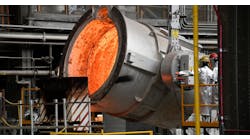Every outlook for commercial aerospace is bullish on the sector’s long-range prospects, with metrics pointing to rising demand for new and more efficient aircraft to address expanding demand for business and leisure travel around the world. And those forecasts are borne out by the bulging order books for the world’s two major aircraft builders, Airbus SA and Boeing Co. These two manufacturers simply cannot keep up with the demand for new jets. Yet, it sure seems that this business is coming to the end of something.
The issue, of course, is the managed slow-down of Boeing’s 737 MAX program as the OEM and federal regulators try to determine the causes of various quality and safety issues uncovered over recent years. The immediate cause, of course, is the inflight failure of a side door ‘plug’ on a 737 MAX 9 early in January, an incident that ended safely but put the 737 program back under the spotlight of official oversight and unauthorized speculation. Boeing’s most profitable aircraft series had returned to normal production just two years ago, having spent 20 months on the ground and in the unwelcome glare of regulators, customers, and passengers. It seemed to be making progress, based on rising new order volumes and improving delivery rates.
It was not back to normal, however, and the pressure was on for Boeing to match the better results posted each quarter by its one and only rival, Airbus. The backlogged orders and earnings targets would have Boeing assembling over 50 of the narrow-body 737s per month, but supply-chain problems had it struggling to complete 38. Since the January incident and the arrival of FAA and NTSB inspectors, that number has been voluntarily scaled back. “We’re deliberately going to slow to get this right,” CFO Brian West told an investors’ conference in March. “We are the ones who made the decision to constrain rates on the 737 program...And we’ll feel the impact of that over the next several months.”
It's possible to look back and see the 737 as the animating factor for the commercial aerospace market we have today. Since the 737 debuted in 1967, air travel has become more routine and more essential. The 737 made short and mid-range flights affordable to more passengers, and it is the basis for carriers’ route systems. Boeing’s aircraft ultimately pushed competitors Lockheed Corp. and McDonnel-Douglas out of passenger jet manufacturing, to become wholly different enterprises.
The problem for Boeing today probably has something to do with this success. It does not lack customers and its customers do not lack buyers for their services. In that way, the market works well for Boeing. In fact, since airline deregulation in 1978 the commercial aerospace sector has been a free-market success story, becoming highly competitive and generally profitable. Commercial aerospace employs millions of workers and supports numerous subsidiary industries. It’s so essential to the economy that federal regulators are content to allow it to be supplied by just two major manufacturers – Airbus and Boeing. (Commuter and regional aircraft is a separate sector, but it too relies on a surprisingly small number of aircraft builders.)
But this managed situation is not fair to the thousands of manufacturers that supply components and systems to Boeing. A near-monopoly like Boeing generally sets the terms of those supplier relationships. And when production slows as it has now, the suppliers bear the cost too.
Free-market forces do not work on Boeing. The incentives that influence its performance come from investors, financial analysts, and regulators. The evidence of Boeing’s 2019-2020 ordeal suggests that regulators can be managed, and current allegations paint the manufacturer as an organization driven to conform to analysts’ expectations at any cost.
The 737 MAX problem reveals Boeing to be a tool of financial interests, a mechanism set up to channel cash in an effective and efficient way, but not a manufacturer that must regularly assess its prospects against its customers' demands and its competitors' challenges.
As a manufacturer, Boeing lacks the competition it needs to improve its performance. It will endure, partly because commercial aerospace is a hard market for competitors to enter. But the current situation is a hard trap to escape for Boeing. This will not end well.









